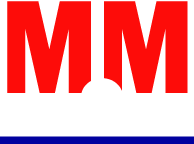How Tire Pressure Affects Fuel Efficiency and Handling
How Tire Pressure Affects Fuel Efficiency and Handling
Proper tire maintenance is essential for maintaining fuel efficiency and handling in your vehicle. One often overlooked aspect of tire maintenance is tire pressure. In this blog post, we will explore how tire pressure affects fuel efficiency and handling, and why it is important to regularly check and maintain the correct tire pressure.
The Relationship Between Tire Pressure and Fuel Efficiency
Underinflated Tires and Fuel Efficiency
When your tires are underinflated, more of the tire’s surface area comes into contact with the road. This increased contact creates more rolling resistance, which requires the engine to work harder to propel the vehicle forward. As a result, your fuel efficiency decreases, and you end up using more fuel for the same distance traveled.
Overinflated Tires and Fuel Efficiency
Similarly, overinflated tires also impact fuel efficiency. When your tires are overinflated, the center of the tread tends to bear most of the weight, leading to decreased traction. This can cause a loss of grip on the road, especially in wet or slippery conditions. As a result, the engine needs to work harder to maintain control, reducing fuel efficiency.
The Impact of Tire Pressure on Handling and Safety
Underinflated Tires and Handling
Underinflated tires can negatively affect your vehicle’s handling and safety. With reduced tire pressure, the sidewalls become more flexible, resulting in less responsive steering. This can lead to decreased control and stability, especially when making quick maneuvers or navigating sharp turns.
Overinflated Tires and Handling
Overinflated tires can also impact your vehicle’s handling. With excessive tire pressure, the tires lose some of their ability to absorb road imperfections and provide a smooth ride. This can make your vehicle feel more rigid, resulting in a harsher driving experience and reduced overall control.
How to Determine the Correct Tire Pressure
Check the Vehicle’s Manual
The first step to determining the correct tire pressure for your vehicle is to consult the owner’s manual. The manufacturer will provide specific recommendations for the optimal tire pressure based on the make and model of your vehicle.
Look for Information on the Vehicle
In addition to the owner’s manual, you can often find information about the recommended tire pressure on a sticker located on the driver’s side door jamb, inside the glove box, or even on the fuel flap. This information may vary depending on factors like the vehicle’s load capacity or driving conditions.
Importance of Regularly Checking Tire Pressure
Maintaining Fuel Efficiency
Regularly checking and maintaining the correct tire pressure can significantly improve your vehicle’s fuel efficiency. By ensuring that the tires are properly inflated, you reduce rolling resistance and allow the engine to work more efficiently, ultimately saving you money at the pump.
Enhancing Handling and Safety
Proper tire pressure is also crucial for ensuring optimal handling and safety. By maintaining the recommended tire pressure, you can have better control over your vehicle, especially in emergency situations where quick steering response is vital. This reduces the risk of accidents and improves overall driving experience.
How to Check and Maintain Tire Pressure
Use a Quality Tire Pressure Gauge
Investing in a quality tire pressure gauge is important for accurate readings. Digital or analog gauges are available, and it’s important to select one that’s easy to use and provides precise measurements.
Check Tire Pressure Regularly
Make it a habit to check your tire pressure at least once a month and before long trips. Remember to check the pressure when the tires are cold, as heat from driving can increase tire pressure and give inaccurate readings.
Inflate or Deflate Tires as Needed
If the tire pressure is below the recommended level, use an air compressor to inflate the tires to the appropriate pressure. Conversely, if the pressure is too high, release air from the tires until the desired pressure is reached. Be sure to recheck the pressure after adjusting.
Additional Tips for Tire Maintenance
Inspect Tires for Wear and Damage
Regularly inspect your tires for signs of wear, bulges, or cuts. Damaged or worn-out tires can impact fuel efficiency and compromise safety. Replace them as necessary.
Rotate Tires on Schedule
Rotating your tires regularly helps ensure even wear and extends their lifespan. Consult your vehicle’s manual for recommended rotation intervals.
Schedule Professional Tire Inspections
Regularly schedule professional tire inspections and alignments to ensure optimal tire performance and prolong the life of your tires.
Conclusion
Maintaining the correct tire pressure is critical for fuel efficiency, handling, and overall safety. Underinflated or overinflated tires can negatively impact fuel efficiency, reduce handling capabilities, and compromise your safety on the road. By regularly checking and maintaining the proper tire pressure, you can enhance your vehicle’s fuel efficiency, improve handling, and enjoy a smoother and safer driving experience. Don’t underestimate the importance of tire pressure; it can make a significant difference in your vehicle’s performance and your peace of mind!
More...
Categorised in: Tire Tips
This post was written by admin





